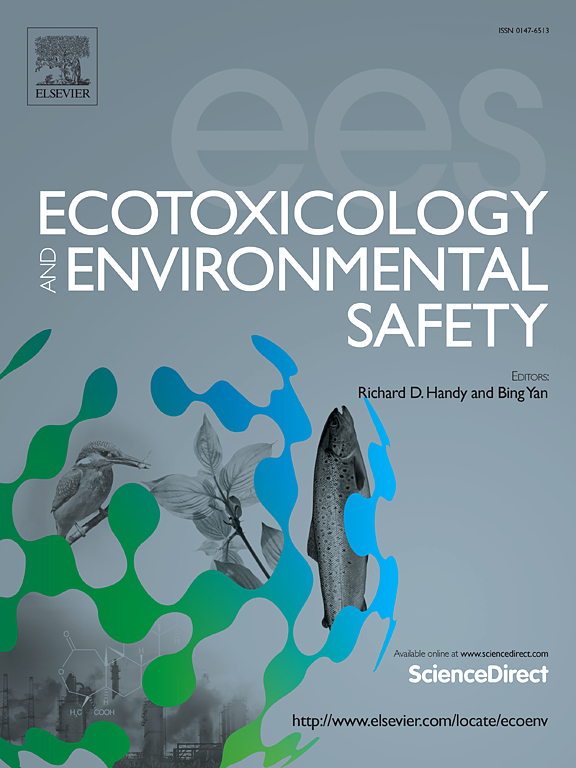The mediating mechanism of Oct4 in the process of cleft palate induced by 2, 3, 7, 8-tetrachlorodibenz-p-dioxin (TCDD) and all-trans retinoic acid
IF 6.2
2区 环境科学与生态学
Q1 ENVIRONMENTAL SCIENCES
引用次数: 0
Abstract
2, 3, 7, 8-tetrachlorodiphenyl-p-dioxin (TCDD) and all-trans retinoic acid (atRA) have been shown to be inducers of cleft palate (CP). Relevant studies have shown that Oct transcription factor 4 (Oct4) can regulate the expression of the aromatic hydrocarbon receptor (AhR), a target gene of TCDD, as well as influence the retinoic acid signaling pathway. However, the mechanism of Oct4 regulating the interaction between TCDD and atRA in CP pathogenesis remains unclear. In order to solve the above problems, mouse embryonic palatal mesenchymal (MEPM) cells were used for further study. The results show that, TCDD and atRA induce a similar pattern of CP in vivo and significantly inhibit the proliferation of MEPM cells. In vitro, TCDD exposure led to up-regulation of AhR and cytochrome P450 1A1 (CYP1A1) expression and down-regulation of cellular retinoic acid binding protein 2 (CRABP2) and retinoic acid receptor-alpha (RARA) expression in MEPM cells. In addition, atRA exposure resulted in decreased expression of AhR and CYP1A1, and increased protein levels of RARA and CRABP2. When Oct4 was overexpressed, the down-regulation of CRABP2 and RARA by TCDD and the down-regulation of AhR by RA were reversed. The cross results of mass spectrometry and Biogrid database show that HSP90AB1 can bind to Oct4 and AhR. Co-immunoprecipitation (Co-IP) results showed that Oct4 and CRABP2 were combined, which further suggested the mediating effects of Oct4 in CP development. In summary, we hypothesize that AhR-HSP90AB1-Oct4-CRABP2 axis may play the key role mediating the interaction between TCDD and atRA in CP pathogenesis.
求助全文
约1分钟内获得全文
求助全文
来源期刊
CiteScore
12.10
自引率
5.90%
发文量
1234
审稿时长
88 days
期刊介绍:
Ecotoxicology and Environmental Safety is a multi-disciplinary journal that focuses on understanding the exposure and effects of environmental contamination on organisms including human health. The scope of the journal covers three main themes. The topics within these themes, indicated below, include (but are not limited to) the following: Ecotoxicology、Environmental Chemistry、Environmental Safety etc.

 求助内容:
求助内容: 应助结果提醒方式:
应助结果提醒方式:


